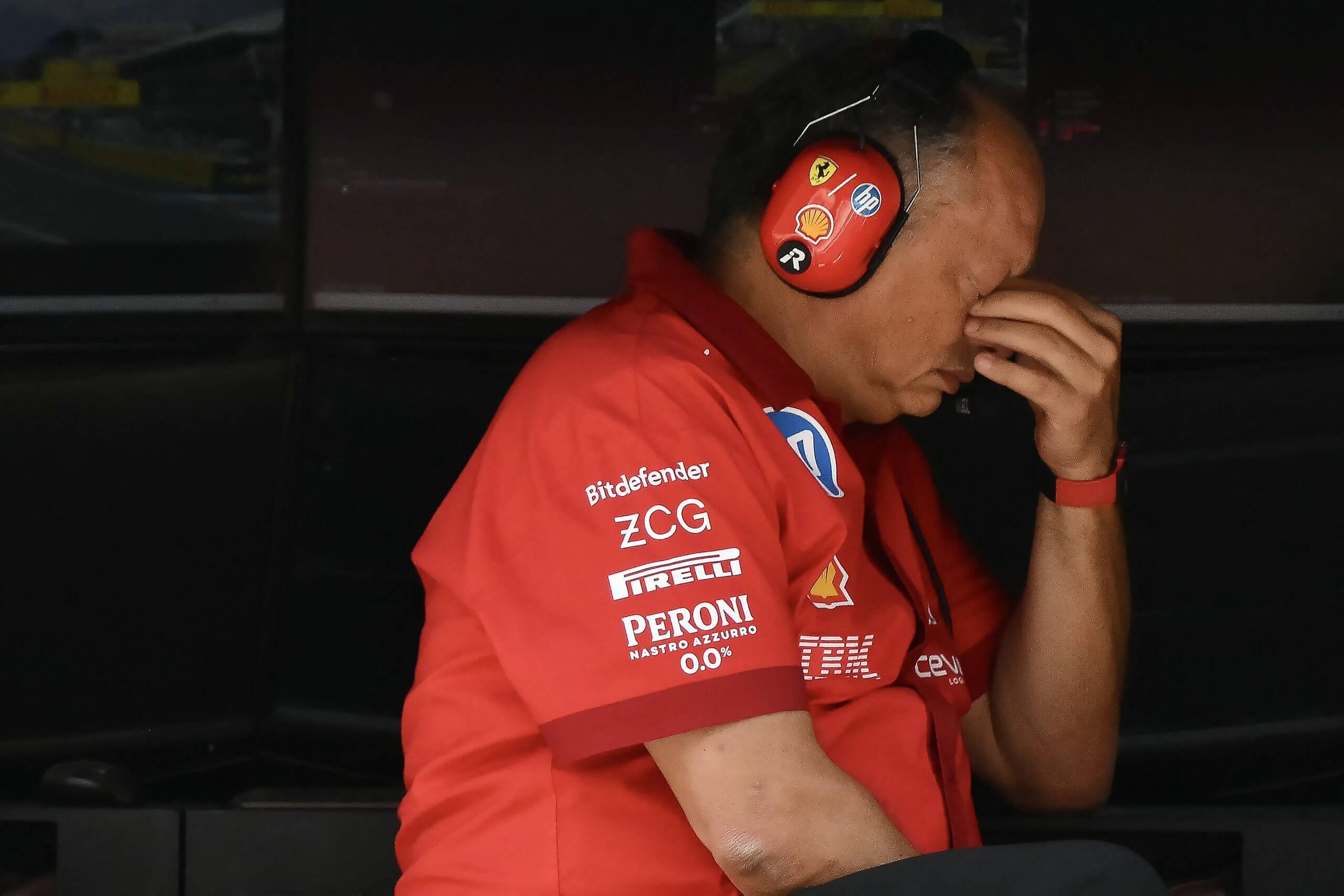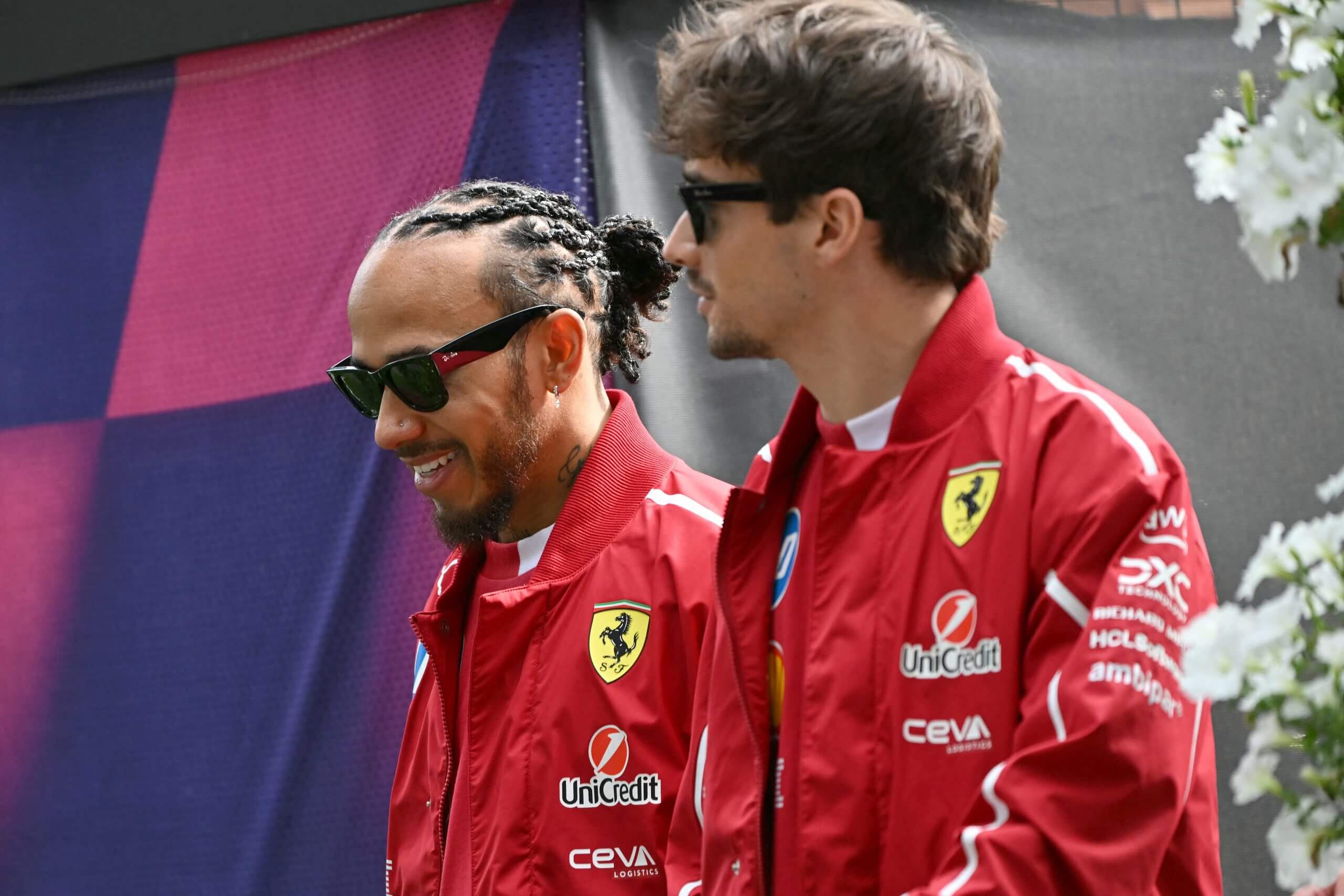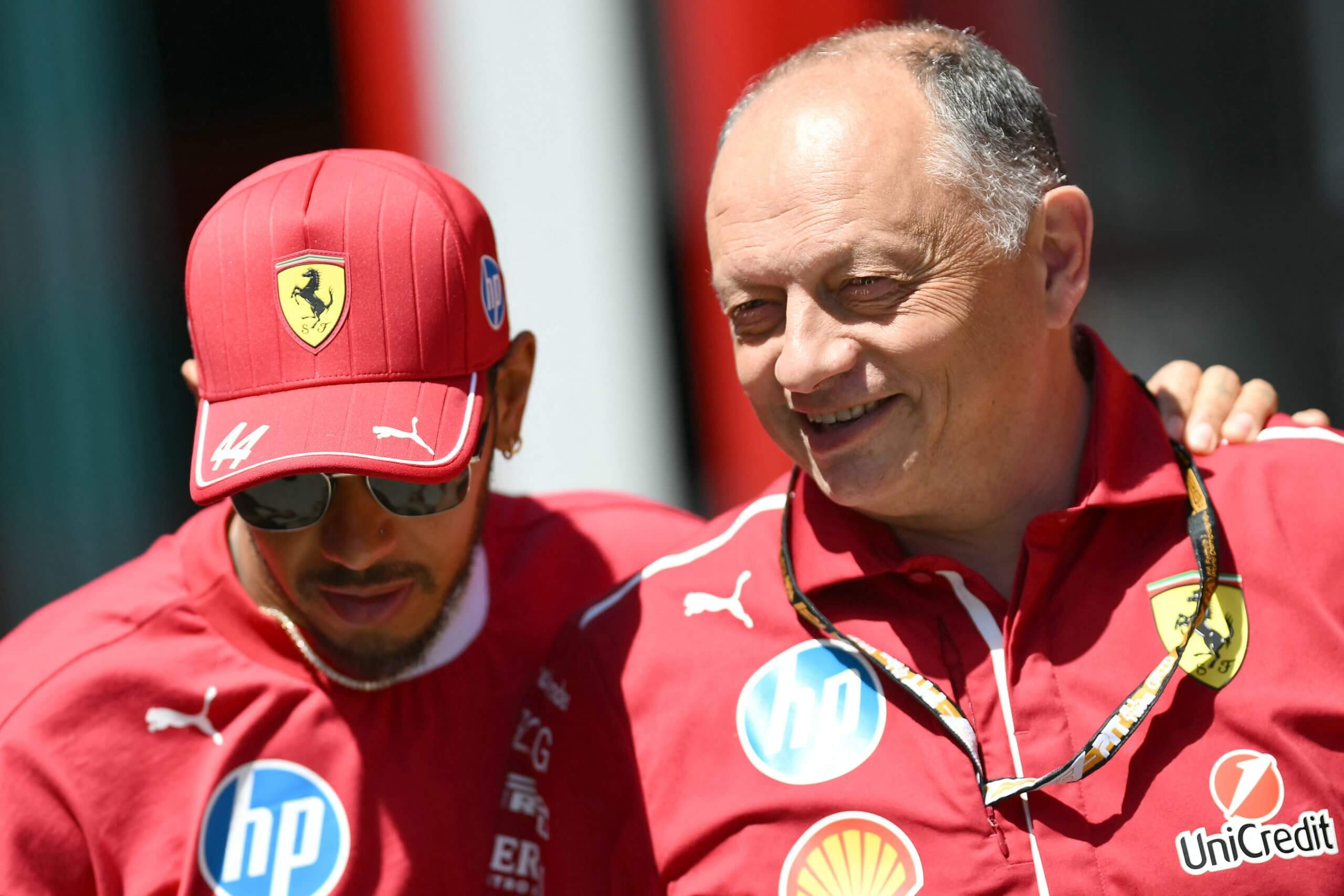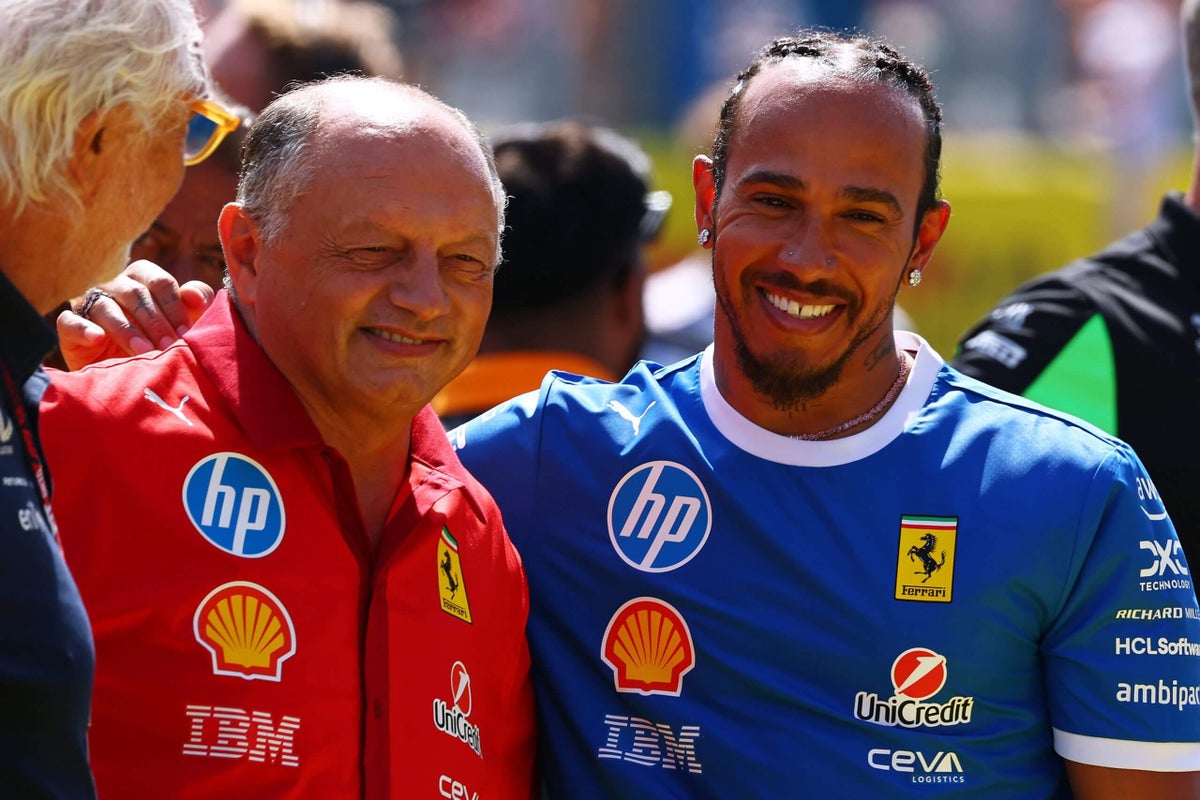Fred Vasseur always knew what he was signing up for when he agreed to become Ferrari’s Formula One team principal at the end of 2022.
Taking the reins of the most famous and successful team in F1 history, one that carries a prestige unlike anything else in the sport, would be the greatest privilege of his career to date. It would also bring the greatest pressure, the scrutiny growing whenever performances fell short of those lofty expectations.
“I’ve been in this business for 30 years,” Vasseur tells The Athletic in an interview over the Singapore Grand Prix weekend. “I knew perfectly that I will be exposed, I will get s—.”
Ferrari’s on-track performances this season have led to questions over the 57-year-old’s future, the team’s fifth team principal since its last championship in 2008. Although the team remains in contention for second place in the constructors’ championship, its form tailed off from its near-miss of a first constructors’ title in 17 years last season when it lost out to McLaren by just 14 points.
While McLaren surged forward this year, romping to a comfortable title victory with a dominant car, Ferrari struggled to clasp to its coattails. The team has failed to win a race, something Red Bull and even Mercedes have achieved, and the signing of Lewis Hamilton, the seven-time world champion, as a teammate to the consistently-quick Charles Leclerc, Ferrari’s ‘chosen one,’ wasn’t enough to make up for the shortcomings with the SF-25 car.
Why did McLaren evolve into championship winners while Ferrari, which was neck-and-neck for performance just 12 months ago, couldn’t even win a race? Vasseur believes consistency has been the key to McLaren’s success this year, making it an outlier in a very tight field where a small change in conditions, such as the wind or track temperature, can have a huge impact on performance.
“We are all oscillating up and down, but I would say that even when they are down, they are still there,” Vasseur says. “And when they are up, they are flying.” He doesn’t believe there’s any “silver bullet” on the papaya cars that makes them significantly quicker than the chasing pack. All Ferrari could do was look inward and work to improve its own car.
The alarm bells started ringing as early as round two in China. Hamilton’s sprint race pole and victory in Shanghai looked like a breakthrough, only for it to come crashing down the next day when both Ferrari cars were disqualified for excessive plank wear. In layman’s terms, the car ran too close to the ground, something that yields performance benefits by increasing downforce. Compromises had to be made for the following races, increasing the car’s ride height which had a negative impact on Ferrari’s performance.
“If you have a big issue at the beginning, you lose a little bit (of) the path, you have to be on the safe side, and you are losing a little bit… the confidence and everything,” he says.

Fred Vasseur reacts in the pit prior to this year’s Italian Grand Prix. (Marco Bertorello / AFP via Getty Images)
Vasseur was heartened by the reaction he saw from the team at Maranello, but the lack of results — just three podium finishes in the first nine races courtesy of Leclerc — meant the spotlight would inevitably start shining that bit brighter. By Canada in June, the first stories emerged in the Italian press questioning Vasseur’s future and that of some Ferrari team members, some of whom had zero design input on the 2025 car.
Having members of his team facing such speculation upset Vasseur, who went on the attack in a news conference in Canada. He denied the stories and claimed they were “really hurting the team.” An even more definitive answer to questions about his future arrived six weeks later when Ferrari announced Vasseur had signed a new contract, with chairman John Elkann professing his faith in the Frenchman.
Despite being a few months removed from the height of those rumors, Vasseur remains frustrated by what unfolded, especially when figures like Loic Serra, the technical director he’d waited almost 18 months to sign from Mercedes due to gardening leave requirements, were being put in the crosshairs.
“At the end of the day, this is mega negative for us,” Vasseur says. “I know that we have to work with pressure, and we have to deal with pressure. It’s the DNA of our sport. But I think you have enough pressure on track to not get pressure at home. We know that we need to deliver. We need to get results.”
Unlike some of his peers, Vasseur doesn’t voraciously track what is being said in the press or on social media. He says he doesn’t even watch TV. Apart from what he’s told by Ferrari’s communications team, he’s unaware of the media chatter. “And I feel pretty good about this,” he says. But he knows the same cannot be true of the entire Ferrari workforce.
“But…” Vasseur claps his hands. “This is behind us. Let’s be focused on the future.”
Ferrari worked to fine-tune the SF-25 car and remedy the ride height issue, with a breakthrough coming at Spa in July courtesy of a rear suspension upgrade. Leclerc was then able to snare a remarkable pole position in Hungary, one he still struggles to explain, only to then fade to P4 through the final stint of the race after leading the first half. While still winless, Ferrari has at least looked a bit more competitive of late.
“I think that the main issue is that we missed the good opportunities for us,” Vasseur says. “A weekend like Baku, I think, for example, we had the pace to do much, much better.” Hamilton suffered a narrow Q2 exit in qualifying Baku in September, while Leclerc crashed in Q3, leaving them to scrap in the lower-reaches of the top 10 through the race. “It is like it is now,” Vasseur says. “We have to pay more attention to execution, to do a good weekend.”

Lewis Hamilton and Charles Leclerc walk in the paddock in Melbourne on March 15. (Paul Crock / AFP via Getty Images)
Leclerc’s form has been a particular bright spot this year. Vasseur still thinks Leclerc is too harsh on himself, but is pleased by the evolution he’s seen through Ferrari’s swings in form. What stands out to Vasseur is Leclerc’s “perfect understanding of the team” and how they work together.
“Sometimes we didn’t start to speak, but I know exactly what he’s thinking — And I think the opposite is true also!” he says. “We have full trust. I know that sometimes, when he’s tough with the team, it’s always to help. This feeling is constructive, going in the right direction to try to build up something.”
But what of Hamilton, the F1 great whose first season wearing the famous Ferrari red has, in his words, turned into an “emotional rollercoaster”? He’s yet to record a podium finish, and endured a serious slump before the summer break, going as far as quipping that Ferrari should “change driver.”
Vasseur was instrumental in signing Hamilton, the pair having remained friendly after working together when Hamilton was in junior categories on his way up to F1. “Lewis came with a huge expectation and motivation and everything,” Vasseur says, recognizing there would always be a novelty factor to begin the partnership after so many years and so much success with Mercedes.
“I think that with Lewis, at the beginning… in French we say ‘tout neuf’ — all nice, all new. And we have to calm down. Mercedes has some items they are doing better, and we are doing better on some other items.”
The sprint win in China remains the high point of Hamilton’s season, but his confidence has grown as the year has progressed, something that is also reflected in the narrowing margin to Leclerc across the garage. And he still has the faith of Vasseur, who is impressed by his star signing’s progression and integration.
“I would say around Barcelona (at the end of May), he came back strong,” Vasseur says. “He’s improving into the composition of the team. The team is improving into the composition of Lewis. So we have to make a kind of ‘mayonnaise’ now! We need to improve step by step. I know that I can trust him and he knows that he can trust me, and this is important. He knows that I will be fully dedicated to the team performance.”

Lewis Hamilton and Fred Vasseur ahead of the first practice session at Imola on May 16. (Marco Bertorello / AFP via Getty Images)
Hamilton told reporters in Singapore that Vasseur’s support for him had been “amazing” through this season.
Vasseur’s dedication was underlined by signing a new contract in the summer, one that ensures he can keep putting the puzzle pieces together for his ‘vision’ of Ferrari to come together. “It was important for me to work into the continuity, but (also) for the group,” he says. “Because we are trying to build up something, and we need consistency.”
The long wait for signings such as Serra is why Vasseur always needed time to build the team as he wanted it. Despite identifying Serra as a key target soon after starting in 2023, F1’s finicky gardening leave arrangements meant he couldn’t join until late 2024, and won’t impact a car design until 2026 — three years after Vasseur first set about getting his man.
“We are building up something with Loic, with Jerome (d’Ambrosio, deputy team principal), with the guys in place,” Vasseur says. “I think the mood in the team is very positive, and we know what we want to achieve. We know what we want to do. And I think this dynamic is important, and it’s important for today and for the future. I feel comfortable in this team.”
So too do the drivers under Vasseur. Leclerc, the spearhead of Ferrari’s on-track success for much of the past seven years, welcomed Vasseur’s “very honest view” and realism running the team, even when pressure and emotions run high. “The team around, etc, he is building it,” Leclerc told The Athletic. “He’s still in the process of it. But I saw lots of improvements. I’m sure that it will pay off. I just hope that it will pay off soon.”
Hamilton joked that Vasseur “still wears the same clothes” and is “exactly the same as he was” when they first met 20 years ago. He too welcomes that Vasseur is a “straight shooter” and has laser-focused on finding improvements. “He’s all about car performance.”
Going into 2026, when the regulations will be overhauled and present the entire grid with an opportunity to leap forward, a huge opportunity lies ahead for Ferrari. Vasseur gets excited by engineers coming to his office with new ideas and concepts, but admits to a sense of nervousness — one shared by every other team boss — that someone else could have already stolen a march.
“I think it will be exciting — except if someone is dominating,” Vasseur says, before adding another caveat with a laugh: “And if it’s not us! If it’s us, it’s fine! This will be mega exciting.”

